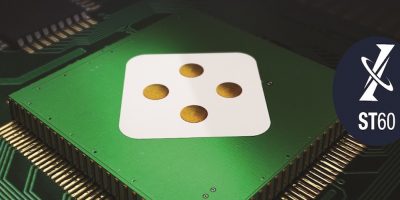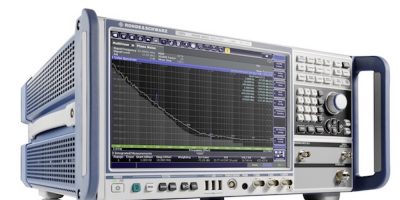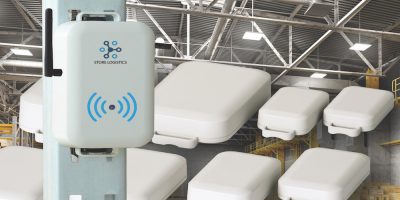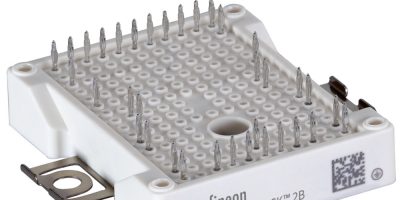STMicroelectronics and Rosenberger, a leading manufacturer of impedance-controlled and optical connectivity solutions, are to collaborate on a contactless connector for ultra-reliable, short-range, point-to-point full-duplex data exchanges in industrial and medical applications.
Rosenberger’s RoProxCon, leverages ST’s 60GHz RF transceiver, the ST60A2, to deliver high-speed data transmission while providing immunity to movement, vibration, rotation and contaminants such as moisture and dust, which can disrupt conventional pin-and-receptacle interconnects.
The STMicroelectronics ST60A2 offers reliable, point-to-point, high-data-rate transmission of up to 6.25 Gbps over distances of a few centimetres at low power. The new connector will suit applications in smart factories, medical technology, connected devices, office equipment, conveyer technology and renewable energies.
Operating over an extended temperature range of -40 to +105 degrees C, the chip ST60A2 is suited to industrial markets. With a 2.2 x 2.2 mm package footprint, the chip offers an ultra-low power consumption of 70mW for a reliable, completely contactless link.
“Pairing ST’s contactless connectivity technology with our interconnect expertise and antenna-design knowledge enabled us to create a first-of-its-kind module that transmits full duplex data at up to 6 Gbps with complete rotational freedom,” said Folke Michelmann, executive vice-president medical and industries at Rosenberger.
“In working with ST, we see limitless application possibilities for our connector, which provides high-reliability and high-throughput at low power.”
STMicroelectronics RF&Communications division general manager Laurent Malier said: “We developed the ST60A2 contactless transceiver to allow customers to create reliable, high data-rate, extremely power-efficient wireless links. Rosenberger’s expertise in interconnects combined with our RF chip is an outstanding example of the value of the technology.”
“Customers across the full range of electronics applications have expressed interest in this transceiver and several have shared their need for a module that includes the antenna.”
Rosenberger’s portfolio includes solutions in high-frequency, high-voltage, and fibre optic technology for mobile communication networks, data centres, test and measurement applications, automotive electronics as well as for high-voltage contact systems, medical electronics an aerospace engineering.
As independent device manufacturer, STMicroelectronics works with more than 100,000 customers and thousands of partners to design and build products, solutions and ecosystems that address their challenges and opportunities, and the need to support a more sustainable world.
For more information go to http://www.rosenberger.com and http://www.st.com







